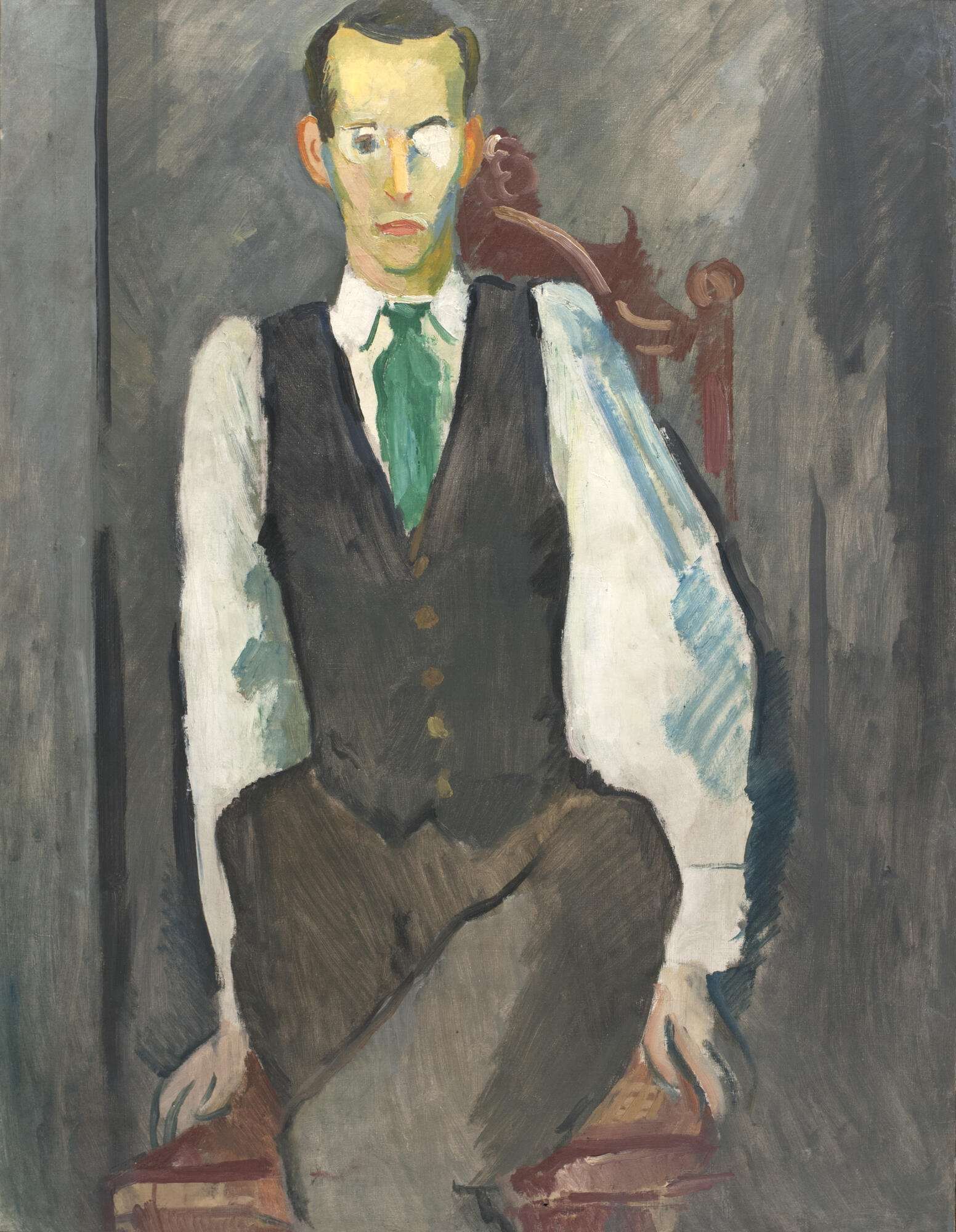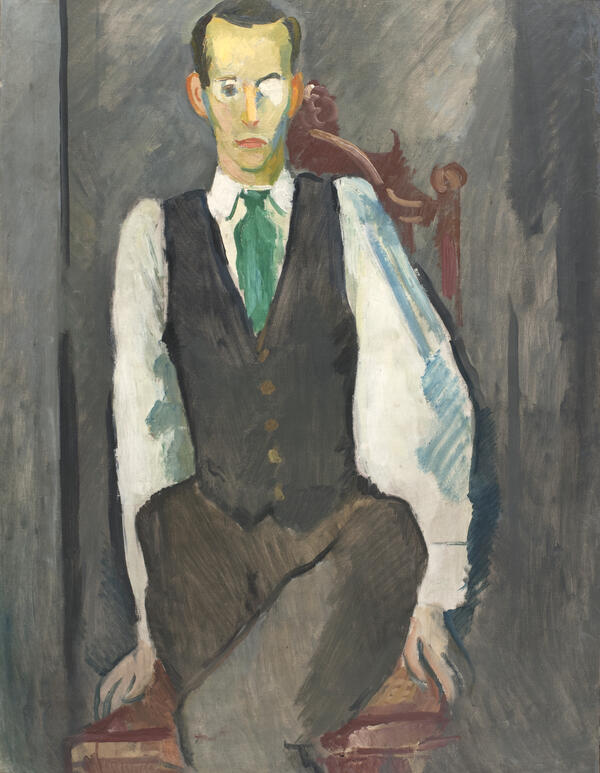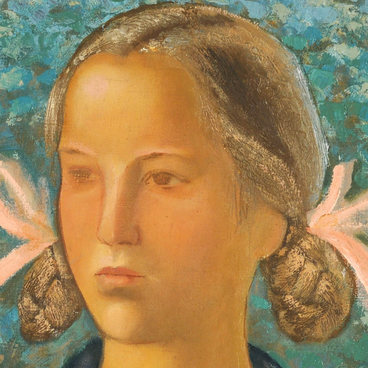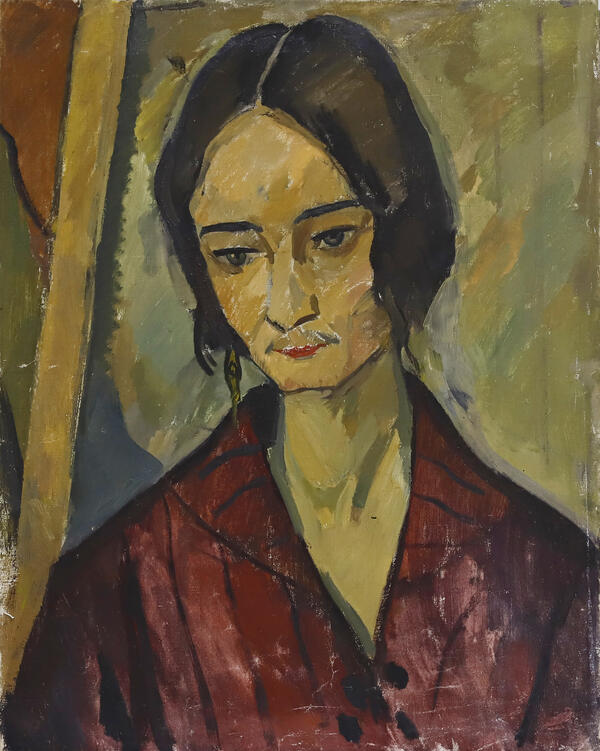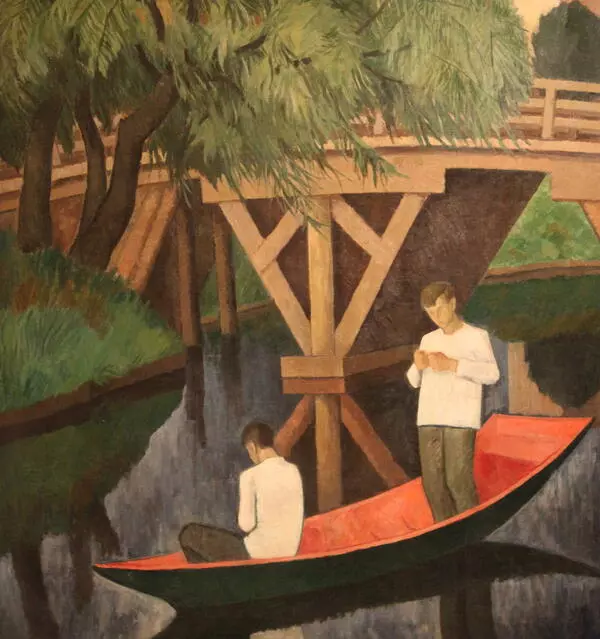The Leningrad painter Aleksandr Rusakov belonged to that first generation of artists that crystallized professionally after the revolution. An unsettled life, poverty, a lack of reliable orders - that was all natural for that time of drastic changes. During these years, artistic life became more and more intensive, many exhibitions were held, and ‘new proletarian art’ was created throughout the country. The idea of creating a new association was so in keeping with the spirit of the times, and it responded so well to the desire to feel independence and originality. In 1926 in Leningrad, a new organization called the Circle of Artists Society was founded, the only association that was so large and whose members were so young. The young artists that entered it wanted to be artists that belonged to their time, to understand that and express it in art.
Aleksandr Rusakov was undoubtedly one of the most gifted and integral painters in the Circle.
Rusakov was surprisingly skillful in catching the likenesses of appearances, gestures, movements, but by no means always attentively, let alone conveying facial features in detail. For him, the ‘uncommon expression’ meant positively everything in the surrounding world. His best portraits are generalizations that are distinguished by strict gentleness, avaricious tenderness, and a fear of saying too much - sometimes by reticence. These works include Portrait of Artist N.D. Yemelyanov from the collection of the Radishchev Museum, which was done in 1930.
In this work, the artist uses the technique of ‘instant portraiture’, which does not eliminate a person’s dependence on the surrounding light and air in the environment, that “espied randomness” inherent in the impressionist method. It can be assumed that the white spot located in place of the model’s eye is just a reflection of light on the face of the depicted figure. The artist uses his favorite technique here - he uses a line in its pure form, a thin, dark brushstroke that is rich in color, and sharply outlines the fingers, vest, shirt, and trousers. These freely applied, soft, springy lines have their own melodious, rhythmic connection. In this portrait, Rusakov does not strive to be a psychologist, or ‘to create characteristics’.
Nikolay Yemelyanov, a famous Leningrad painter and graphic artist, a loyal ‘Circle man’, was a friend of Aleksandr Rusakov. An artist that had a difficult, tragic fate, who was passionately fond of French art, he proved himself as a subtle lyrical artist that represented the Leningrad school of painting with dignity. His work has remained mostly unexplored, and his artwork has been lost, or is scattered throughout private collections.
Aleksandr Rusakov loved his young friend, and more than once painted portraits of him. The renowned portraits done by Yemelyanov that are kept at the Nikolayev Art Museum, or are with the artist’s family, were done a little later than the one from our collection was, in 1931-1932.
Rusakov was surprisingly skillful in catching the likenesses of appearances, gestures, movements, but by no means always attentively, let alone conveying facial features in detail. For him, the ‘uncommon expression’ meant positively everything in the surrounding world. His best portraits are generalizations that are distinguished by strict gentleness, avaricious tenderness, and a fear of saying too much - sometimes by reticence. These works include Portrait of Artist N.D. Yemelyanov from the collection of the Radishchev Museum, which was done in 1930.
In this work, the artist uses the technique of ‘instant portraiture’, which does not eliminate a person’s dependence on the surrounding light and air in the environment, that “espied randomness” inherent in the impressionist method. It can be assumed that the white spot located in place of the model’s eye is just a reflection of light on the face of the depicted figure. The artist uses his favorite technique here - he uses a line in its pure form, a thin, dark brushstroke that is rich in color, and sharply outlines the fingers, vest, shirt, and trousers. These freely applied, soft, springy lines have their own melodious, rhythmic connection. In this portrait, Rusakov does not strive to be a psychologist, or ‘to create characteristics’.
Nikolay Yemelyanov, a famous Leningrad painter and graphic artist, a loyal ‘Circle man’, was a friend of Aleksandr Rusakov. An artist that had a difficult, tragic fate, who was passionately fond of French art, he proved himself as a subtle lyrical artist that represented the Leningrad school of painting with dignity. His work has remained mostly unexplored, and his artwork has been lost, or is scattered throughout private collections.
Aleksandr Rusakov loved his young friend, and more than once painted portraits of him. The renowned portraits done by Yemelyanov that are kept at the Nikolayev Art Museum, or are with the artist’s family, were done a little later than the one from our collection was, in 1931-1932.
